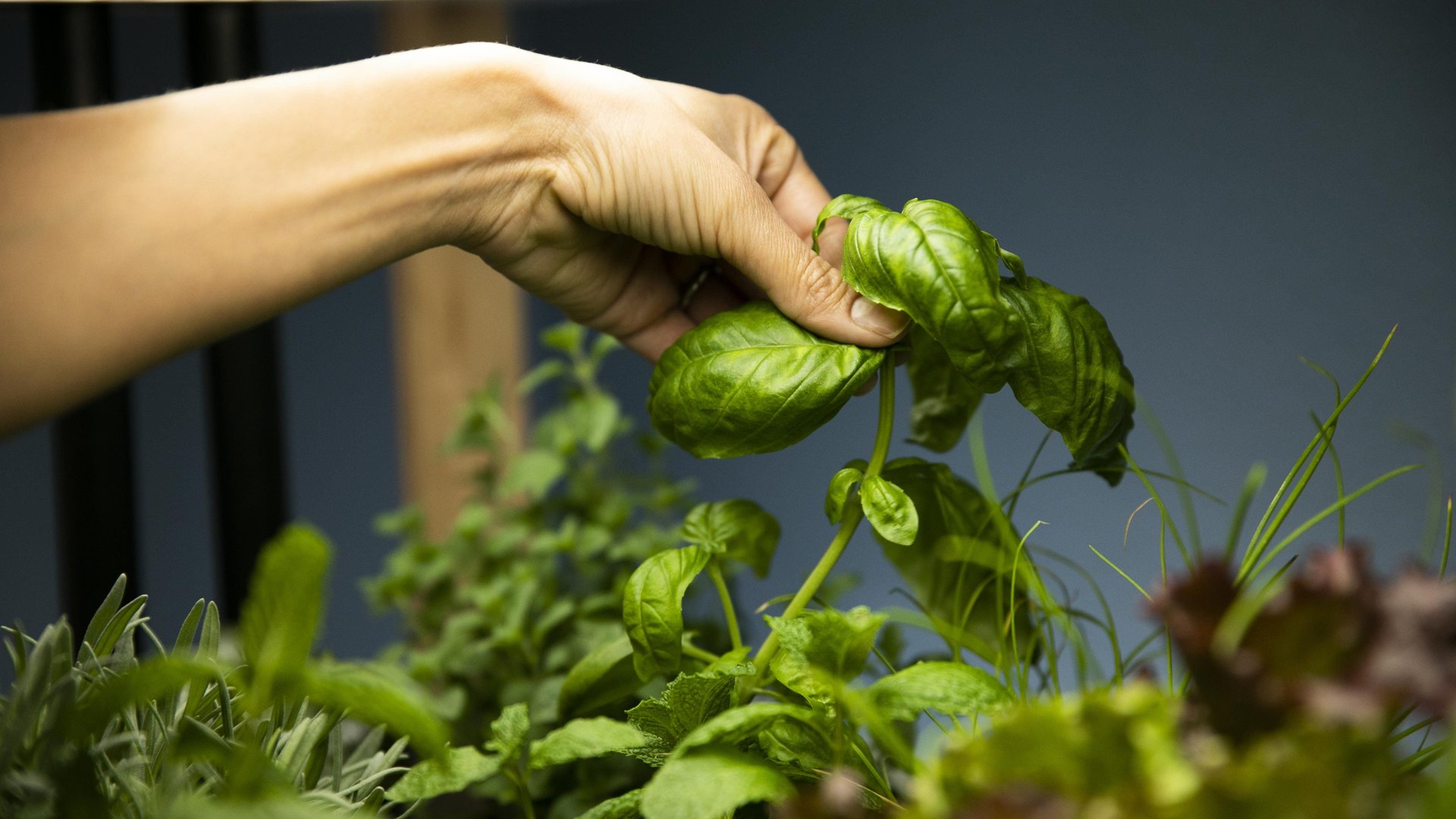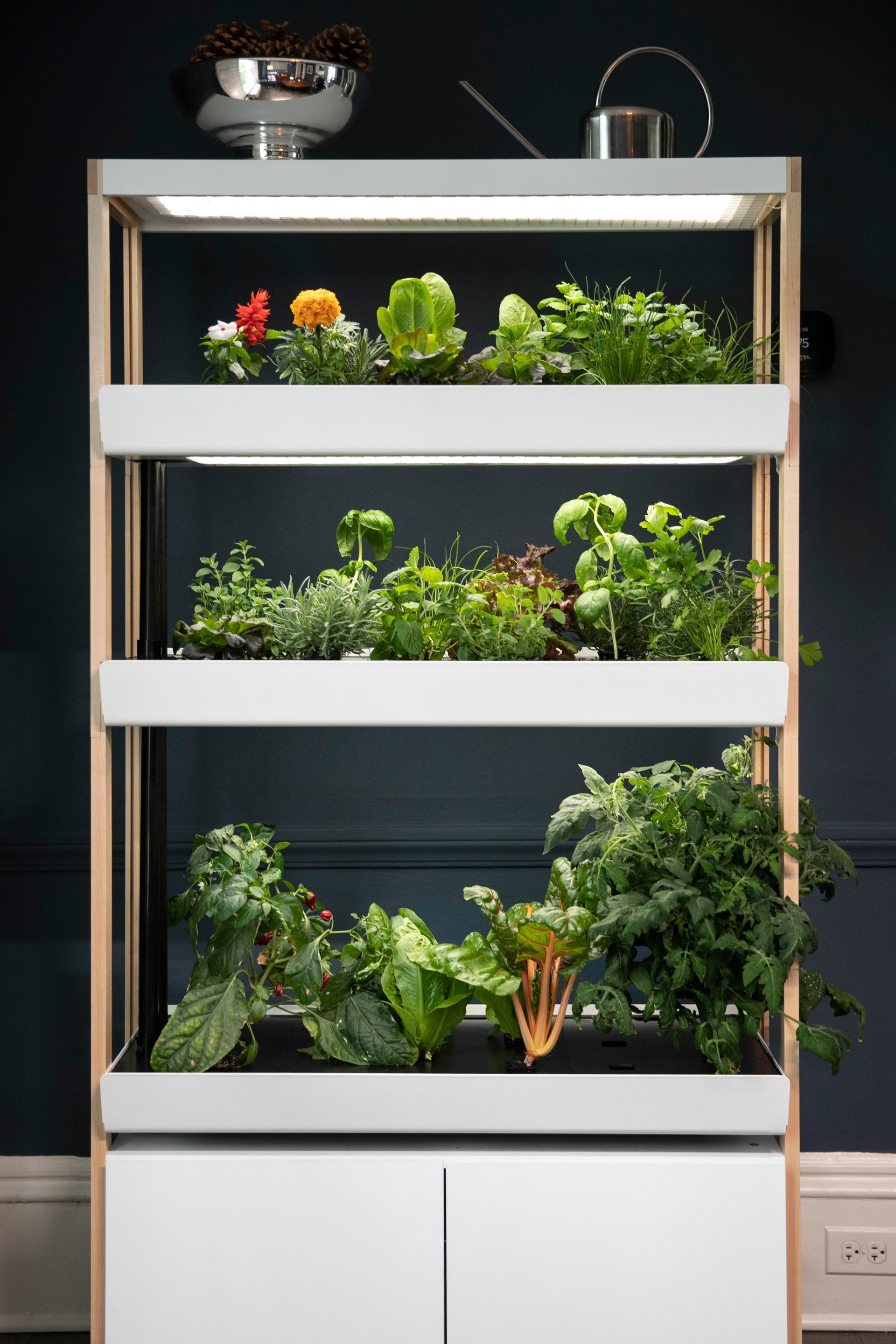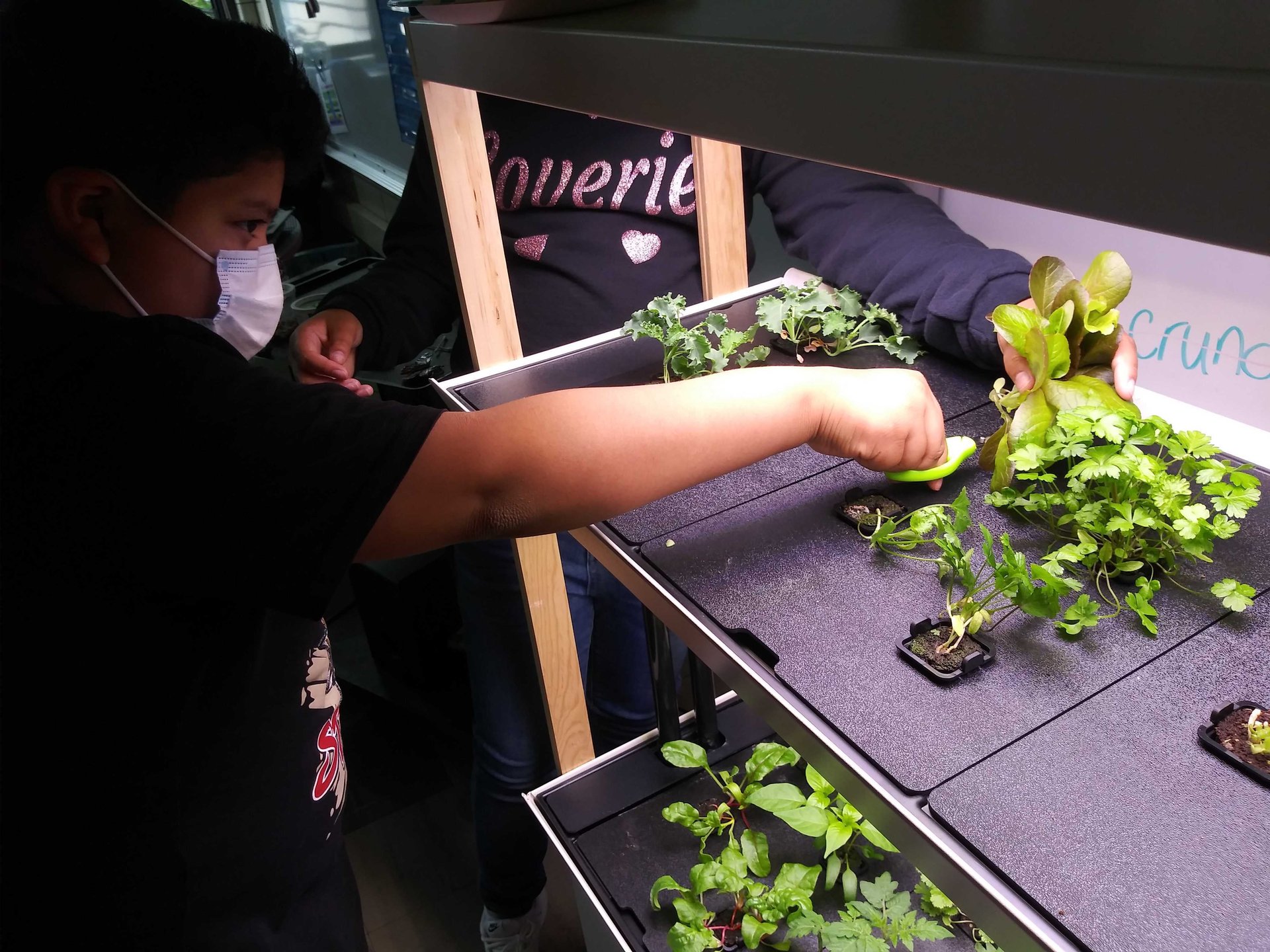A small business is blooming out of Rise Gardens
This is a story about growth.


This is a story about growth.
On one level, it’s about the germination and rapid development of Rise Gardens, a two-year-old company that has created one of the most popular indoor, in-home garden products in the United States.
On another level, it’s about the gardens themselves—self-contained units that automate much of the grunt work of gardening and empower gardeners to grow their own produce year-round, regardless of the temperature outside.
According to company founder Hank Adams, the parallel narratives lead Rise Gardens’ customers to a place of abundance at a time when their nation’s food distribution system could be better.
“Our current system is so broken—we have long supply chains, we’re shipping heads of lettuce all over the country, we’re importing fruits, and we have the capacity to be growing a lot more of our own food,” Adams says. “The real mission behind doing this was that I wanted people to be able to grow year-round.”
How Rise Gardens works
The Rise Gardens system solves all these problems with a sophisticated, fully automated hydroponic kit that is easy to assemble and even easier to run. (Hydroponics is a method of growing plants in a water-based, nutrient-rich environment.)
Once users assemble a Rise Garden system, they connect it to an app to track the growth of their plants. The app records what’s growing and facilitates adjustments to light intensity and duration. Users are encouraged to add five gallons of water and “plant” seed pods into holes in trays that sit above the water.
Rise Gardens systems grow seed pods for produce including root vegetables, nightshades, greens, and herbs. Over time, roots will grow from the pods into the water below. When water levels get too low, an LED indicator flashes red. The end result is free of pesticides, herbicides, and fungicides.
Dozens of additional varieties of pods are available for purchase and order by mail. Rise Gardens also sells a three-part nutrient solution with a pH adjustment solution—essentially a proprietary version of MiracleGro.
Rise Gardens systems currently come in four sizes: personal, single, double, and triple. The systems are produced in Taiwan and Mexico, and include components from the United States. Prices range from $279 to $949; each unit comes with a number of starter seed pods, which also are sold separately.

“After they get the system up and running, customers can get as creative with it as they want,” said Adams. “In this sense we really set out to make it like a real garden and give people the opportunity to be creative.”
Who’s using it
The Rise Gardens system was designed for individual consumers, who remain the company’s primary customer. An alternative use has been in offices, where some companies have gardens growing as a perk for employees to be able to harvest fresh food for their lunches, as well as to beautify the setting with some living greens.
A third common landing spot for Rise Gardens: schools.
The educational application of these products is compelling, as Rise Gardens products serve as self-contained demonstration systems for unpacking in-classroom gardening. Teachers can use the systems to explore, experiment, and explain how plants grow. Adams says the nutrient solution opens up learning possibilities for more advanced students who may want to explore the chemistry behind the nutrients, and how pH affects nutrient uptake.
Erie Charter School in the Humboldt Park neighborhood of Chicago is one such school making use of Rise Gardens’ products. There, kindergarten teacher Olivia Goldstein has a unit in her classroom and has incorporated the system into the day-to-day curriculum. The unit sits right by the door, so students can observe and monitor the growth of the classroom vegetables as they arrive.
“It grabs their attention right when they come in,” she said. “They can touch the plants and feel them and think about what we’re going to plant next.”
Nico Janik, a science and engineering teacher on special assignment for the Ravenswood City School District in East Palo Alto, California, says Rise Gardens systems make learning about plants easy and fun for students. “When you can see everything growing right before your eyes, it’s hard not to get excited,” she said.

These types of reviews have led to big numbers for Rise Gardens in the early going.
10,000 gardens sold
Though Adams won’t reveal specific sales numbers, he says the company is running at a growth rate of about 400%. It’s closing in on 10,000 gardens sold and is monitoring more than 100,000 plants through its app.
Adams says his most popular product is the personal-size unit, which is small enough to sit on a table or desk and retails on Amazon.
“Demand remains high,” Adams says. “More than 50 million people started gardening during the pandemic, and some of them turned to us for help.”
Kevin Erickson, urban agricultural manager at the Loyola University School of Environmental Sustainability in Chicago, stops short of endorsing Rise Gardens’ specific product but says that small-scale hydroponics offer great opportunities for gardening newbies to learn more about what it takes to grow produce successfully.
“The ease of use, low maintenance, and high output of these systems works well in a classroom setting, and during long holidays or summer periods it can be easily shut down with little effort,” he says. “The environmental impact of food production is enormous. From soil and aquatic systems pollution to the greenhouse gas emissions involved in distributing food around the world, home-scale hydroponics food production can help mitigate these impacts.”
What’s next for Rise Gardens
Adams, who previously worked in the sports business and created the technology that creates a virtual first-down line on football television broadcasts, says Rise Gardens has given him unexpected benefits as a small-business owner and as a gardener. “When I started this, it was geared toward food and nutrition and enjoying the hobby,” he says. “What I underestimated the natural joy that comes with visceral joy of planting something and watching it grow. Even as an adult, you get crazy pride out of watching something develop and mature. That’s something to appreciate.”
Looking forward, Adams says the company will focus on expanding the diversity of what can be grown in a Rise Gardens unit. This means making the system able to grow all sorts of different plants, including micro-greens. Part of this challenge is creating new seed pods. Then there’s the work of getting people to embrace new and unfamiliar edible plants.
“We get about 90% of our vegetable nutrition from 30 plants,” Adams says. “We want people to experiment and have fun.”
Matt Villano is a freelance writer and editor in California. Learn more about him at whalehead.com.